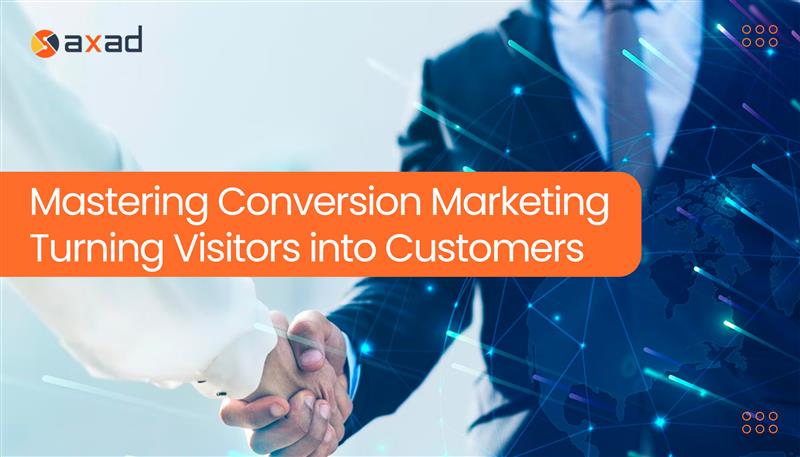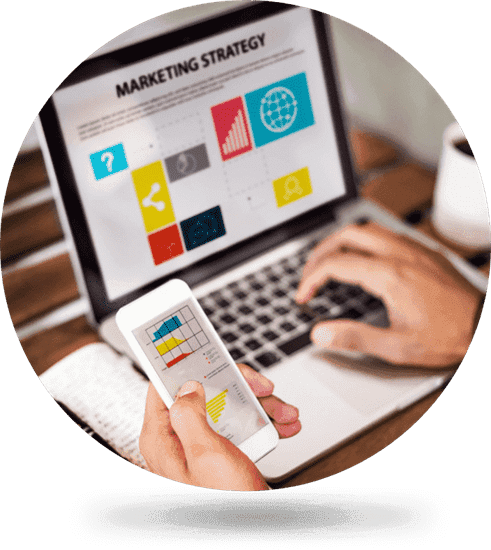Mastering Conversion Marketing: Turning Visitors into Customers
| August 18, 2023
Introduction
Today to meet the Digi world needs, businesses strive to maximize their online presence and attract as many potential customers as possible. However, simply driving traffic to a website is not enough. The percentage of visitors who become paying customers is the ultimate indicator of success. This is where conversion marketing comes into play. Conversion marketing is a strategic approach that focuses on optimizing every step of the customer journey, ultimately leading to higher conversion rates and increased revenue. In this blog, we will explore the key principles, strategies, and best practices of conversion marketing to help businesses achieve their goals.
Understanding Conversion Marketing
Conversion marketing revolves around the idea of converting website visitors into customers, subscribers, or leads. The ultimate goal is to prompt a specific action from the visitor, such as making a purchase, signing up for a newsletter, or filling out a contact form. Unlike traditional marketing, which often aims to reach a wide audience, conversion marketing focuses on improving the efficiency of the marketing funnel to enhance the rate of conversions.
1. Creating an Engaging User Experience
A fundamental aspect of conversion marketing is delivering a seamless and enjoyable user experience. Visitors are more likely to convert when they find a website visually appealing, easy to navigate, and user-friendly. Businesses should invest in responsive web design, fast loading times, and intuitive interfaces to keep visitors engaged and motivated to take action.
2. Compelling Call-to-Actions (CTAs)
An effective CTA is a powerful tool for Conversion Marketing. It should be clear, and persuasive, and encourage immediate action. Employ action-oriented language and place CTAs strategically throughout the website to guide visitors toward the desired outcome.
3. A/B Testing and Optimization
A/B testing is a crucial practice in conversion marketing. By creating multiple versions of a webpage and testing them with different segments of the audience, businesses can identify which elements perform better and optimize accordingly. This data-driven approach allows for continuous improvement and higher conversion rates.
4. Personalization
Getting the attention of potential clients requires personalization. By leveraging data on user behavior, preferences, and demographics, businesses can tailor content and offers to meet individual needs. Personalized experiences create a sense of relevance and connection, increasing the likelihood of conversion.
5. Building Trust and Credibility
Building trust is essential for conversion marketing. Display customer reviews, testimonials, and trust seals to instill confidence in your brand. Offer transparent pricing and secure payment options to further enhance credibility and reduce friction during the buying process.
6. Utilizing Social Proof
Social proof plays a significant role in influencing customer decisions. Showcase positive social proof, such as user-generated content, endorsements, and social media engagement, to demonstrate that others have had positive experiences with your brand.
7. Effective Landing Pages
Well-crafted landing pages are a crucial element of conversion marketing. These pages are designed to focus on a specific offer or campaign and should be free of distractions. The content should be persuasive, and the design should complement the CTA, leading to a higher conversion rate.
8. Implementing Exit-Intent Popups
Exit-intent popups are a clever way to capture the attention of leaving visitors. By identifying when a user is about to leave the site, a popup can display a compelling offer or message to entice the visitor to stay or complete a desired action before departing.
9. Retargeting Campaigns
Many visitors don’t convert on their first visit to a website. Retargeting campaigns help bring these potential customers back by displaying targeted ads on other websites they visit. This reminder can be the nudge they need to return and complete the desired action.
10. Mobile Optimization
With the increasing use of mobile devices, optimizing for mobile is no longer optional. A mobile-friendly website is crucial for conversion marketing, as a poor mobile experience can deter visitors and lead to missed opportunities for conversions.
Final Thought
Conversion marketing is an indispensable strategy for businesses seeking to achieve sustainable growth in the digital era. At AXAD by focusing on optimizing the customer journey, creating engaging experiences, and utilizing data-driven practices, the team works on improving their conversion rates and boosting business bottom line. Remember, conversion marketing is an ongoing process that requires constant monitoring, testing, and adaptation to stay ahead of the competition and meet the ever-changing needs of customers. Embrace the power of conversion marketing, and watch your business flourish as you turn visitors into loyal customers.
